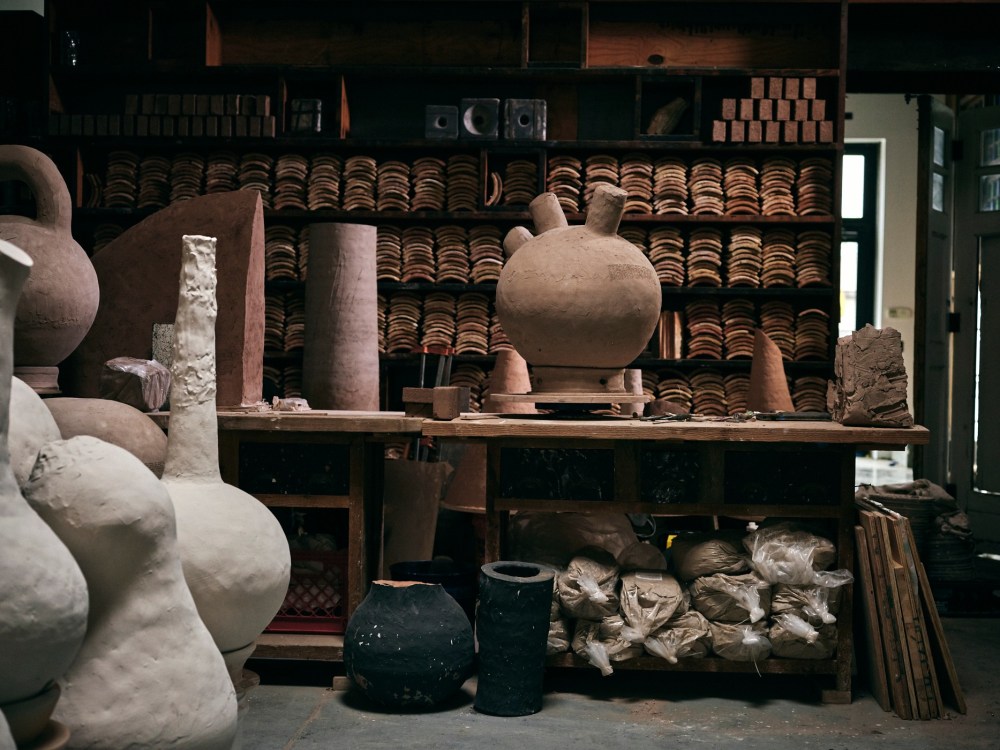
For the last twenty years, artist Theaster Gates has expanded the field of contemporary art and pushed us to reconsider the canon through materials. Trained as an urban planner and a sculptor whose primary medium is clay, Gates has dedicated a significant part of his practice to reflecting on the relationships between space, craft and the cultural specificity of traditions that shape one's artistic trajectory.
For this year’s project, Le chant du centre (The song of the center), Gates’ intervention transforms the Grande Halle, at LUMA Arles into a clay manufacturing workshop where visitors enter a site of Gates’s production and sculptural research. He has created a sacred space around the Temple, a central installation made from pottery ware-boards that hold his personal vinyl collection, a sake bar and other artworks. Assembled, these elements are a testament to the performance, production and proposal inherent in ceramic futures, or what Gates refers to as the "museological, political and social possibilities" of honoring clay's ability as both a functional and sculptural gateway in the fine arts.
About Le chant du centre, Gates says: Craft, to me, is interesting, but the political deployment of craft, the performativity of craft, the consumerism caused by craft, is where craft becomes instrumentalized t stand-in for other social and economic ambitions. It is my desire to exhaust the questions within myself about the colonialization that happens over the hand. Through this project, I interrogate my own faculty around what craft means, for whom I want it to have meaning and, quite possibly, its meaninglessness.
The space reflects on the nature of Senegalese, Malian, Korean, and Chinese workshops where collectives of people, often family members, work together to produce a particular style of making. In this spirit, Gates and LUMA Arles have constructed in Camargue a traditional Anagama - a variation of a Korean kiln introduced to Japan in the fifth century - which is fired for five to seven days. The kiln serves as a site of research and production, using the region’s primary natural elements: timber, rice husk and salt.
Conceived as a durational and demonstrative installation, Le chant du centre will be in constant evolution as new wares and sculptures are formed and fired, allowing to each visit new forms of engagement with the work. This conceptual and practical approach to the ceramic workshop explores the ways in which sculpture affects the body and the ways in which craft becomes a vehicle for understanding our human nature in relation to material processes.